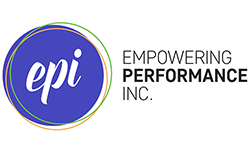Three Tips for Helping Gen Z Build Power Skills
How do you weave non-traditional content like career-ready skills into traditional college learning experiences—and do it seamlessly?
In our work designing Charlie Academy’s career-ready materials, we collaborated with educators and students to understand how leadership-skill content can soar on college campuses.
Check out these three simple practices to see what works on the ground…
Tip 1: Motivate with the Why and How
Gen Z won’t engage in power-skills learning if it feels like “just another assignment.”
Use statistics
Show that employers expect certain skills.Create relevance
Tie practical application of skill content to academic and non-academic programs.Teach follow-through
Ensure learners leverage their skill-building on resumes and job applications.
“I’ve seen that when instructors use their own first-hand experiences and weave skills-based development into their existing curriculum, it elevates the importance of the content and students identify the value in applying the content to their everyday life.”
Tip 2: Use a Flipped Classroom
Gen Z wants and expects both digital and in-person learning resources and experiences.
First, offer online materials to teach foundational skills content.
Then, use workshops or class time for learner reflection, discussion, peer-to-peer learning, and skill practice.
“Here’s an equation that works: Ask students to engage in and reflect on an online skill-based course. Then host an interactive workshop—not a class, a workshop! I have facilitated 10 unique skill-based workshops with athletic teams at my university within the past 3 months, with more scheduled every semester.”
Tip 3: Make Learning Self-Guided and Structured
Gen Z enjoys selecting the skills they want to learn about within a structured framework.
Skill self-assessments guide learners to identify the skills they need to build.
Provide options: Create structured learning paths as well as à la carte content selection.
Ensure there are online or in-person learning checks and skill practice.
“I like how I got to choose the skills that would help the most.”
“Different students relate to different topics. Students like having a range of courses so they can pick what they want to learn.”
Want to learn more about our partnership with Charlie Academy? Check out our partnership case study!

